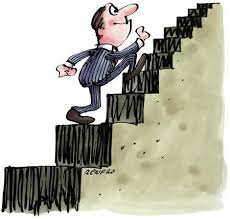I wrote the following story for the Charlotte Observer and The News & Observer of Raleigh; it ran in both papers on April 9, 2013. It appears here, with links.
 A spin class at the gym, or an afternoon working in the garden? Pilates, or taking the stairs every day to your third-floor cubicle? Zumba, or shooting hoops with the kids after dinner?
A spin class at the gym, or an afternoon working in the garden? Pilates, or taking the stairs every day to your third-floor cubicle? Zumba, or shooting hoops with the kids after dinner?
While hitting the gym three times a week may sound impressive, a recent study out of Oregon State University backs up what a number of health care professionals have been preaching for years: An active lifestyle peppered with frequent, short bursts of activity is better for you than a largely sedentary lifestyle with every-other-day trips to the gym.
“Our results suggest that engaging in an active lifestyle approach, compared to a structured exercise approach, may be just as beneficial in improving various health outcomes,” says Paul Loprinzi, lead author of the study, which monitored more than 6,300 adults.
Loprinzi, an assistant professor in the Department of Exercise Science at Bellarmine University in Louisville, Ky., conducted the study, published in the January/February American Journal of Health Promotion.
“The study backs up previous studies from 2009 and 2011 that had the same theme,” says Dr. Ben Walker, a cardiologist with Rex Hospital in Raleigh. “Those studies both found that patients who worked out one hour a day but were otherwise sedentary didn’t necessarily eliminate the risks of their sedentary lifestyles.”
“That 30 minutes a day, three days a week is just getting started,” says Jan Wagner, an exercise physiologist with Novant Presbyterian Heart and Wellness in Charlotte. “I support people getting 10 minutes here, 10 minutes there, wherever they can get it.”
Small bursts of activity
The Oregon State study suggests that activity bursts of just one or two minutes – the time it takes to take the stairs or park at the opposite end of the lot from the grocery’s front door – can make a difference. The study found that 43 percent of participants who relied on short bursts of regular activity met the federal government’s minimum recommendation for daily activity, while only 10 percent of those whose exercise was concentrated in longer but less frequent sessions in the gym met the minimum.
One of the biggest obstacles to sustained activity: jobs that have become increasingly sedentary. Wagner suggests various ways to inject a little activity into the workplace.
“If you have a desk job, choose to take the stairs, choose to get up every hour, at least, and find an errand to run,” she says. “If you get a question via email that demands a complicated response, get up and go give your answer in person.”
Wagner says even the act of sitting – and we spend up to 70 percent of our day doing just that, according to a study by the University of Leicester – can be turned into exercise.
“We got exercise balls for everyone in our department,” says Wagner. Not to sit on, but as chair replacements.
“Your core becomes so much stronger, your posture improves, you use your leg muscles, your quads, your hamstrings, your hip region and torso. You’re using those muscles and you don’t even realize it.”
Health experts say the study also comes as good news for people who claim they don’t have enough time to exercise.
“You simply incorporate these changes into your lifestyle,” says Wagner.
The Oregon State study found that the benefits of an ongoing active lifestyle included improved blood pressure, cholesterol levels, shrinking waistlines and reduced risk for metabolic syndrome, which can increase the chances for cardiovascular disease and diabetes.
‘Do a lot on your own’
Patrick Indivero of Raleigh didn’t need a study to tell him that.
Indivero, who is 65, was an athlete in high school and college, then succumbed to a sedentary lifestyle when he entered the workforce and gained weight. He took up running, ran marathons, got back into shape. A few years later he drifted away from running and put the weight back on.
In January, he thought he might have a heart murmur, so he went to the doctor. He didn’t have a murmur, but his cholesterol and blood pressure were high, he’d put on weight, and other potential health problems loomed.
“I didn’t want to go on medications,” says Indivero. So he started walking. And parking at the far end of the lot. And taking the stairs. Two months later he’d lost 15 pounds and his cholesterol and blood pressure were where they should be.
“I’ve just tried to stay more active in my daily life,” says Indivero. “The lesson to be learned: You can do a lot on your own.”
* * *
What you can do
Here’s a look at small lifestyle changes you can make to be more active, and the number of calories they burn. Instead of doing this, do this:
- Take the escalator/elevator (3 calories) or walk three flights of stairs (20 calories)
- Buy pre-sliced veggies (0) or wash, slice and chop your own (20)
- Use a leaf blower for 30 minutes (115) or use a rake for 30 minutes (175)
- Shop online for one hour (35) or shop at the mall for an hour (215)
Also:
- Instead of driving half a mile, bike or walk the same distance.
- Instead of using a riding lawn mower, use a push lawn mower.
- Instead of sitting and being a spectator at a child’s sporting event, take a walk around during the halftime break.
Source: Oregon State University
More ideas
Check out our Do This Not That series here.